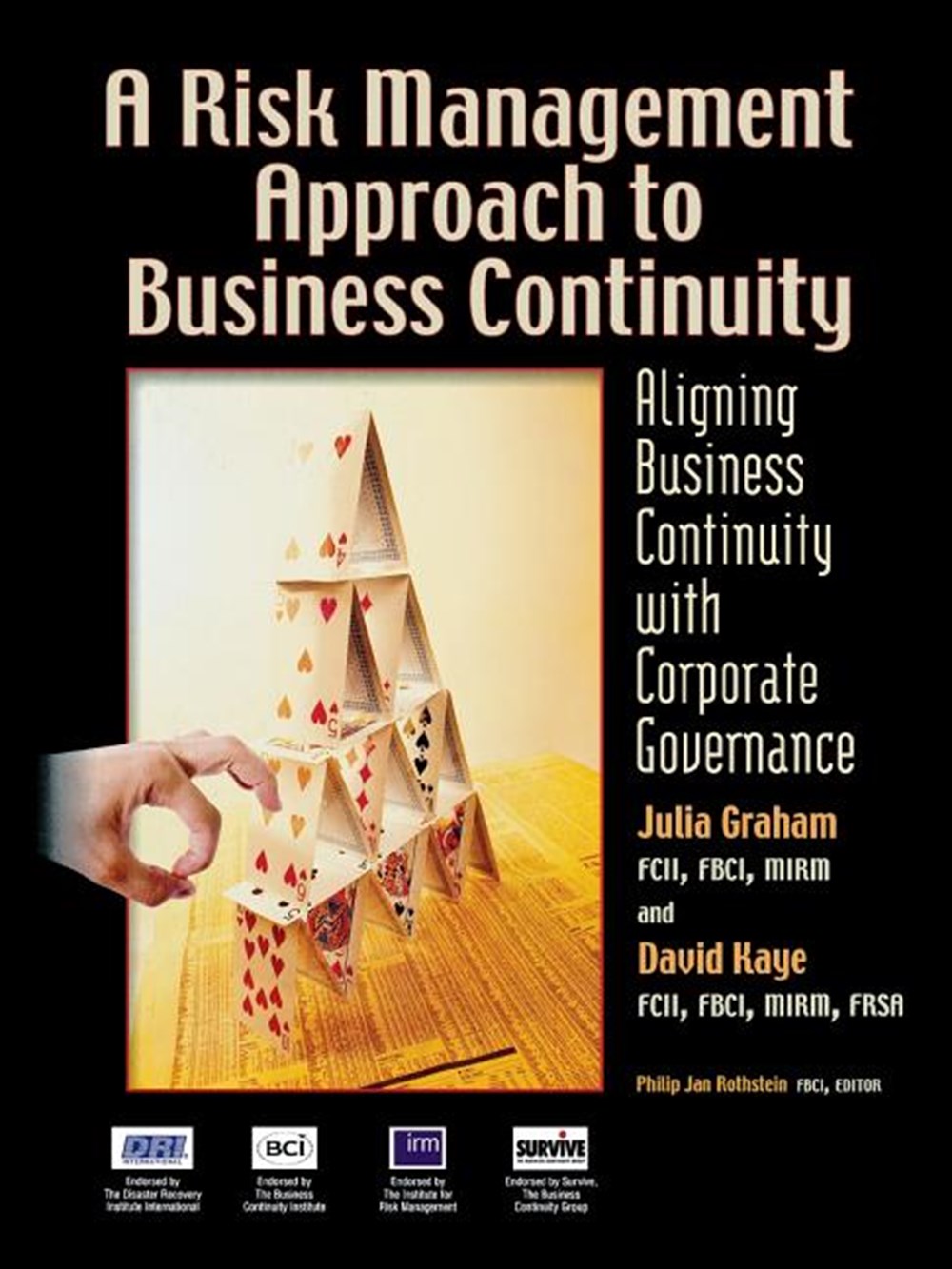
A Risk Management Approach to Business Continuity: Aligning Business Continuity with Corporate Governance
Key Features a[ Sets the scene for Business Continuity Management (BCM) a[ Demonstrates the value of organizational understanding of BCM a[ Assesses a wide variety of risks and opportunities a[ Examines practical tools and part of risk management and corporate governance a[ Gives clear advice on moving from theory to practical application a[ Endorsed by Institute for Risk Management; the Business Continuity Institute; the Disaster Continuity Institute; and Survive.
| Quantity | Price | Discount |
|---|---|---|
| List Price | $99.99 |
Non-returnable discount pricing
$99.99
Book Information
| Publisher: | Rothstein Publishing |
|---|---|
| Publish Date: | 01/31/2006 |
| Pages: | 416 |
| ISBN-13: | 9781931332361 |
| ISBN-10: | 1931332363 |
| Language: | English |
Full Description
First Practical Guide to Integrating Risk Management, Business Continuity Management and Corporate Governance From Two World-Renowned BCM Pioneers Who Have Served on the British Standards Institution (BSI) Team Creating a British and International Standard for Risk Management. The U.S. Department of Homeland Security (DHS) is currently developing disaster preparedness standards for businesses. DHS is incorporating language from the British Standards Institution (BSI) because it "provides a management systems approach to business continuity and integrates risk management disciplines and processes." The two authors of this now classic text in the field have been directly involved in developing those BSI standards. Here they bring you a distillation of their worldwide experience in pioneering the integration of the disciplines of risk management and business continuity. This practical guide is endorsed by: * * * The Business Continuity Institute * * * The Institute for Risk Management * * * Disaster Recovery Institute International It includes numerous helpful features: * * * Chapter objectives, summaries and bibliographies; charts, sample forms, checklists throughout * * * Plentiful case studies, in boxed text, drawn from enterprises around the globe, including the UK, US, Europe, Australia, Asia, etc. * * * Boxed inserts summarizing key concepts * * * Glossy of 150 risk management and business continuity terms * * * Timely topics, including stakeholder management, supplier management, outsourcing, the people factor, technology recovery, and communication, both internally and externally. * * * Wide range of challenges, including supply chain disruptions, media and brand attack, product contamination and product recall, bomb threats, chemical and biological threats, etc. * * * Instructions for designing/executing team exercises with role playing to rehearse scenarios * * * Guidance on how to develop a business continuity plan, including a Business Impact Analysis * * * Ideal for senior undergraduate, MBA, certificate, corporate training programs; in use at 50+ campuses worldwide * * * Instructor Materials on CD, including PowerPoint slides and syllabus for 12-week course with lecture outlines/notes, quizzes, reading assignments, discussion topics, projects * * * Authors with extensive international experience in all aspects of risk management and business continuity, having worked with organizations in a combined total of 50 countries The authors' message is that risk management has become a strategic tool in managing all risk across an organization, and that BCM forms one more important tool in a much wider and coordinated risk management program. They are now complementary disciplines that must be understood and supported by your organization as a whole, including CEO's, directors, non- executive directors, risk managers, continuity managers, internal and external auditors, investment managers, compliance managers, finance directors, human resource managers, project managers, regulators, corporate trainers and other stakeholders. After discussing the relationship between risk management and BCM, the authors take the reader through the business continuity management cycle: how to understand the organization and its culture; continuity strategies; how to develop and implement a business continuity response, including developing a Business Impact Analysis; building and embedding a business continuity culture; testing/exercising a plan, along with benchmarking, maintenance and audit. "This book is a must read for those senior managers, risk managers and continuity managers who have the vision to see both the new opportunities and the new responsibilities of business continuity management." - George J. Mitchell, Chairman, DLA Piper Rudnick Gray Cary; Former Senate Majority Leader and U.S. Senator for Maine.

